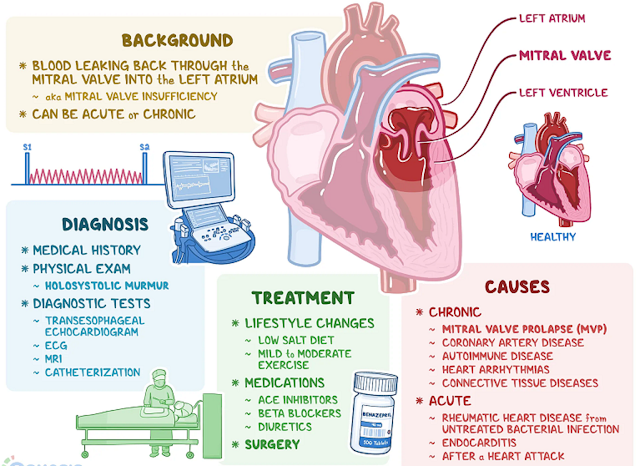How to Treat Mitral Regurgitation?
Mitral and tricuspid regurgitation can generally be treated
with oxygen, drug therapy and surgery.
The treatment methods for mitral and tricuspid regurgitation
are as follows:
1. Oxygen Inhalation for Mitral Regurgitation
Oxygen inhalation is to inhale gas with
an oxygen concentration greater than or equal to the oxygen concentration in
the air through a nasal cannula or a mask to improve the hypoxia state.
Generally speaking, the most common problems are the heart
and lungs, as chronic bronchitis, pneumonia, or other lung problems can affect
the intake of oxygen, while reducing the amount of oxygen in the body, leading
to hypoxia.
2. Drug Therapy for Mitral Regurgitation
Drug therapy mainly refers to the general term for all diseases treated with chemical drugs or traditional Chinese medicine, mainly to help patients control the progression of the disease, prevent complications, and facilitate the recovery of patients. Because drug treatment can shorten the course of the disease, or improve the patient's clinical symptoms, reduce the patient's discomfort, or increase the patient's resistance to the disease. Drugs are common for a variety of diseases.
Chronic diseases
require long-term use of safe and effective drugs to maintain the stability of
the condition, so everyone should go to a regular hospital.
3. Surgical Treatment for Mitral Regurgitation
Surgery refers to the excision, repair
or replacement of damaged organs or some organs with morphological defects by
surgical methods. It can effectively relieve or improve the symptoms of certain
genetic diseases and relieve the suffering of patients.
Surgical correction is the main means of surgical treatment.
Deformities caused by genetic diseases can be corrected, repaired or removed
surgically.
What Matters need attention for patients with mitral and tricuspid regurgitation?
Matters needing attention for patients with mitral and tricuspid regurgitation:
First, pay attention to a low-salt and low-fat diet on
the diet, and also control the daily water intake, so as not to gain weight
every day.
Secondly, if the patient has edema, it is necessary to
control the weight, which can reduce the retention of water and sodium in the
body, reduce the load on the heart, and help improve heart function.
Finally, you can eat more fresh fruits and vegetables, which
can supplement vitamins and potassium on the one hand, and prevent constipation
on the other hand.
Alcohol and tobacco should also be avoided, and stimulating
beverages such as strong tea and coffee should be avoided. Because these
dietary factors can induce cardiac insufficiency or heart failure, they may
also cause various types of arrhythmias.
Author's Bio
Education: MBBS, MD
Occupation: Medical Doctor
Specialization: Community Medicine, General Surgery, Natural Treatment
Experience: 18 Years as a Medical Practitioner




Comments
Post a Comment